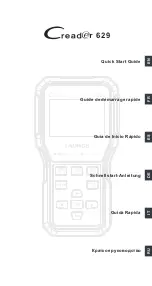
PCB Load & Torque, Inc.
Toll-Free in USA 866-684-7107
716-684-0001
www.pcbloadtorque.com
DUAL BRIDGE LOAD CELL OPERATION MANUAL
6
6.1.1 Measured Output
The applied load starting at zero is measured in five
increments to full scale. Output (mV/V) is measured at each
increment. The straight-line from zero to the full scale
measurement is compared to the measured readings at each
increment to calculate the error at each load increment. The
deviations (% Full Scale) corresponding to non-linearity at
each measurement increment are then calculated.
6.1.2 Hysteresis
The difference between the ascending and descending
measured readings at 40% of full scale is used to calculate the
hysteresis value.
6.1.3 Best Fit Output
The best fit calibration second-order equation has been
calculated from the calibration data by the method of least
squares. Deviation between measured output and best-fit
output is calculated and displayed in the column next to the
best-fit output for each measurement increment. The
deviations (% Full Scale) of measured outputs from the
calculated best fit are tabulated for each measured reading.
6.1.4 Strain Gage Measurements
6.1.5 Shunt Calibration Standard Resistor
All dual bridge load cell calibrations use a 60K Ohm (0.01%)
precision resistor shunt calibration value that is supplied into
the calibration report.
6.1.6 Static Error Band (SEB)
The static error band (SEB) is determined by the maximum
deviations of the ascending and descending calibration points
from the best fit straight line through zero output. The SEB
includes the effects of nonlinearity, hysteresis, and non-return
to minimum load.
7.0 MOMENT COMPENSATION
When an eccentric axial load is
applied to a load cell that is not
coincident exactly with the
centerline of the load cell, it
introduces bending moments
into the load cell structure. The
strain gage bridges on dual
bridge fatigue rated load cells
are adjusted such that the error
due to eccentric loading is less
than
±
0.1% per inch of offset.
Side loads, moments and torque must be limited to avoid
electrical or mechanical damage to the load cell. The
allowable extraneous loads are directly related to the rated
capacity of the load cell.
•
Maximum side force allowed is 100% of the rated
capacity for the load cell.
•
Maximum moment allowed is 100% of the rated
capacity times 1 inch.
•
Maximum torque allowed about the measurement
axis is rated capacity times 1 inch.
Maximum error due to side loading or moment loading is
0.1% per inch of the rated capacity. Each dual bridge load cell
is carefully tested and adjusted according to our specifications
ensuring that crosstalk due to off-center loading, moments and
side load is less than 0.1% of applied load.
8.0 FATIGUE & OVERLOAD
Dual bridge load cells are designed and manufactured to
perform accurately and reliably for 100 million fully reversed
full scale load cycles. They have been specifically designed
for applications involving high cycle fatigue loading on
products and structures. The designs are based on more than
four decades (since 1970) of experience in the design and
manufacture of precision low-height load cells.
The load cell structure is machined from aircraft quality alloy
steel, heat treated, and finished with attention to details critical
for maximum fatigue life. For maximum stiffness and low
stresses throughout the load cell structure, the maximum
stresses are concentrated precisely under the strain gages.
The load cell structural safety factor against fatigue failure is
in excess of 2.5 for alloy steel and 2 for aluminum. See Figure
14. The maximum shear stress measured by the bonded strain
gages is less than 40% of the endurance limit shear stress for
alloy steel and 48% for aluminum.
Bridge Resistance:
350 Ohm Nominal
Excitation:
+P(A) to –P(D) Ohms
Signals:
+S(B) to –S(C) Ohms
Leakage to Ground:
> 5k GOhm
Bridge Unbalance:
±
1.0% Full Scale
Output:
2.0 mV/V Nominal
Maximum Voltage:
20 VDC
Table 7
– Strain Gage Measurements
T
M
X
M
Y
S
Primary
Axis
Figure 13
- Extraneous Loads


































